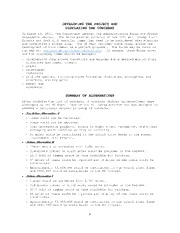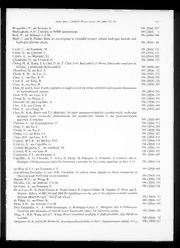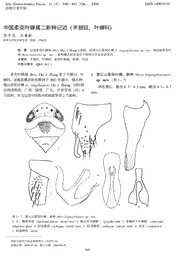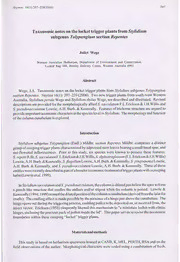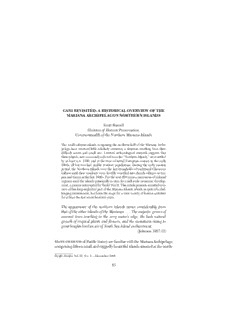
Gani Revisited: A Historical Overview of the Mariana Archipelago's Northern Islands PDF
Preview Gani Revisited: A Historical Overview of the Mariana Archipelago's Northern Islands
Russell Page83 Monday,June26,2000 11:59AM GANI REVISITED: A HISTORICAL OVERVIEW OF THE MARIANA ARCHIPELAGO’S NORTHERN ISLANDS Scott Russell Division of Historic Preservation, Commonwealth of the Northern Mariana Islands The small volcanic islands composing the northern half of the Mariana Archi- pelago have received little scholarly attention, a situation resulting from their difficult access and small size. Limited archaeological research suggests that these islands, now commonly referred to as the “Northern Islands,” were settled by at least a.d. 1300, and at the time of initial European contact in the early 1500s, all but two had sizable resident populations. During the early mission period, the Northern Islands were the last strongholds of traditional Chamorro culture until their residents were forcibly resettled into church villages on Sai- pan and Guam in the late 1690s. For the next 250 years a succession of colonial regimes used the islands principally as sites for small-scale economic develop- ment, a process interrupted by World War II. This article presents an initial over- view of this long-neglected part of the Mariana Islands, which, in spite of a chal- lenging environment, has been the stage for a wide variety of human activities for at least the last seven hundred years. The appearance of the northern islands varies considerably from that of the other islands of the Marianas....The majestic groves of coconut trees reaching to the very water’s edge, the lush natural growth of tropical plants and flowers, and the mountains rising to great heights lend an air of South Sea Island enchantment. (Johnson 1957:12) Many students of Pacific history are familiar with the Mariana Archipelago, comprising fifteen small and ruggedly beautiful islands situated at the north- Pacific Studies, Vol. 21, No. 4—December 1998 83 Russell Page84 Monday,June26,2000 11:59AM 84 Pacific Studies, Vol. 21, No. 4—December 1998 western corner of Micronesia. During World War II, a few of these islands gained worldwide notoriety as scenes of bloody battles between Japanese and American troops, and as the launching point for the atomic-bomb attacks that forced Japan’s capitulation. In addition to their prominent role in recent military history, the Marianas have the dual distinction of being the first group of islands in Micronesia settled in prehistoric times and the first to be subjected to European colonization. While much has been written concerning the relatively large southern islands of Guam, Rota, Tinian, and Saipan, archaeologists and historians largely have ignored the ten primarily volcanic islands that lie in a gently curving arc to the north of Saipan.1 These islands are small, ranging from tiny Farallon de Medinilla with less than one square kilometer of dry land to Pagan, measuring nearly fifty square kilometers in extent. All are extremely rugged, with Agrigan possessing an elevation of 964 meters (3,181 feet) above sea level. Seven of these islands have undergone volcanic eruptions during historic times, with Uracas and Pagan being particularly active. In addition to unstable geological conditions, their lack of developed reef systems, limited areas of flat land, sporadic rainfall, and few protected land- ing spots have combined to make these islands difficult locations for settle- ment and commercial activities. In spite of their size, challenging environ- ments, and relative isolation, these islands have played a significant role in Marianas history. What follows is an overview of this long-neglected part of the archipelago now commonly referred to as the Northern Islands.2 Prehistory The results of archaeological and linguistic research suggest that the Mari- ana Islands were first colonized at least thirty-five hundred years ago by Austronesian-speaking peoples who departed directly from Island Southeast Asia, most likely from the Philippines (Hunter-Anderson and Butler 1995: 29–30). These settlers, the ancestors of the modern Chamorro people, brought with them sophisticated canoe and ceramic technologies and a subsistence system based on sea fishing and the cultivation of tree and root crops. During the earlier period of Marianas prehistory, commonly referred to as the Prelatte Phase, Chamorros apparently resided in small, scattered villages that were situated in coastal beach environments on the larger southern islands of Guam, Rota, Saipan, and Tinian (Butler 1994:16). Presently, there is no evidence suggesting that any of the Northern Islands was occupied permanently during the Prelatte Phase, although it is quite likely that they were visited periodically for resource exploitation. Russell Page85 Monday,June26,2000 11:59AM 114455'' .... UUrraaccaass ..~~ MMaauugg •• AAssuunncciioonn •• AAggrriiggaann "".. PPaaggaann TThhee NNoorrtthheerrnn IIssllaannddss 1188°° •• AAllaammaaggaann •• GGuugguuaann 1177'' •• SSaarriiggaann __ AAnnaattaahhaann FFaarraalllloonn ddee MMeeddiinniillllaa II SSAAIIPPAANN TTIINNIIAANN~~ AAgguuiigguuaann RROOTTAA ~~ oo 5500 II II KKiilloommeetteerrss Figure 1. Map of the Mariana Archipelago. Russell Page86 Monday,June26,2000 11:59AM 86 Pacific Studies, Vol. 21, No. 4—December 1998 Beginning roughly one thousand years ago, Chamorro culture underwent significant changes. Among these were subsistence adaptations, including the addition of rice to the crop repertory, increased competition for land and its resources, and the development of megalithic architecture. Perhaps the most dramatic change in this later period, commonly referred to as the Latte Phase after the stone shafts and caps (“latte stones”) used to support Chamorro residential structures, was a significant expansion of settlements outside of the optimal coastal beach zones (Hunter-Anderson and Butler 1995:66–68). In addition to expanding into less desirable coastal areas and inland locations on the southern islands, Chamorros also established settle- ments on several of the Northern Islands late in this period. It is not clear when the Northern Islands were first settled or what the nature of the first settlements was. Although the islands were subjected to cursory investigations during the Spanish, German, and Japanese colonial administrations, few modern archaeological projects have been completed, and there is a paucity of archaeological data from this area. Only one small- scale survey and testing project undertaken at a latte village site on the eastern coast of Pagan included radiocarbon analyses (Egami and Saito 1973: 203–226). The dates resulting from this project suggest that the site was occupied by a.d. 1300, which is consistent with the generally accepted view that the Northern Islands were settled relatively late in the prehistoric sequence. Latte stone sites also have been observed on Alamagan and Sarigan (Fritz 1902:96–118; Russell 1996:2). It is possible that they are present on several other islands as well, particularly Anatahan and Agrigan. However, the small, nearly barren island of Farallon de Medinilla and Uracas, an active volcanic cone located at the extreme northern end of the archipelago, prob- ably never were settled. Observations made by the Japanese archaeologist Yawata in the pre– World War II years indicate that caves on Pagan, Alamagan, and Asunción were used as mortuary areas, and artifact assemblages at ancient sites resembled those found in the southern islands but were not as numerous (Chapman 1964:81). Without systematic survey data, however, little more can be said regarding the nature or distribution of ancient sites in these islands. Owing to the local geology, latte in the Northern Islands were fashioned from several types of volcanic rock. Latte of softer rock varieties sometimes were shaped, but those of hard basalt normally were used with little modifi- cation. One notable aspect of latte in the Northern Islands, at least on Ala- magan, were platformlike extensions constructed immediately adjacent to the long axis of the latte house (Chapman 1968:70; Russell 1996:2). The Russell Page87 Monday,June26,2000 11:59AM The Mariana Archipelago’s Northern Islands 87 function of these platforms is not known, although they may have provided a clean area for domestic activities. There is some evidence to suggest that basalt rock, used to make tools, primarily late in prehistoric times, was being transported from Anatahan and Agrigan to Chamorro communities in the south (Mangold 1997). Con- versely, pottery, an important class of ancient artifact, was being brought into the Northern Islands. Since the Northern Islands lacked suitable clay sources, pottery production on islands north of Saipan would have been impossible. A study of a small collection of ceramic sherds recovered from a latte site on Alamagan suggests that pots were imported from the southern islands, including Saipan and perhaps Rota (Butler 1996:3–4). Life on these small, rugged islands was tenuous, and their inhabitants undoubtedly were reliant, at least in part, on periodic assistance from larger communities residing in the relatively resource-rich southern islands. A sup- port system would have been essential for the survival of these small settle- ments particularly following natural disasters such as tropical storms and droughts. The Spanish Period The Mariana Islands enter the written historical record following Ferdinand Magellan’s brief but fateful visit in March 1521. Magellan commanded a Spanish expedition that sought to reach the valuable Spice Islands by sailing westward to avoid Portuguese-controlled waters. Although Magellan’s land- fall was not mentioned by name, most historians believe that it was Guam, the largest and southernmost island of the archipelago (Rogers and Ballen- dorf 1989:193–208). Desperate for supplies, Magellan sought to acquire food and water from the native inhabitants before continuing westward. The ensuing first encounter between the two cultures quickly turned violent, when the Spanish killed several Chamorros in retaliation for the theft of a ship’s boat. Believing that the Spanish had been misused by the natives, Magellan disparagingly named the islands Islas de los Ladrones, or Islands of Thieves, a designation that would appear on maps and in documents well into the nineteenth century. Magellan’s expedition eventually reached the Spice Islands, where its two surviving ships, Victoria and Trinidad, were loaded with spices and readied for the return voyage. Rather than staying together, their captains decided to take different routes back to Spain. The Victoria continued westward and reached Seville in 1522, thus completing the first circumnavigation of the earth. The Trinidad’s commander, Gonzalo Gomez de Espinosa, wishing to avoid Portuguese-controlled waters, unwisely decided to return home by Russell Page88 Monday,June26,2000 11:59AM 88 Pacific Studies, Vol. 21, No. 4—December 1998 recrossing the Pacific. While passing through the northern end of the Ladrones chain, Espinosa seized a Chamorro in a canoe off Asunción, in- tending to take him back to Europe (Lévesque 1992:324). However, after weeks of battling contrary winds and rough weather, the Spanish were forced to abandon their easterly course and attempt a return to the Spice Islands, a move that once again brought Trinidad through the northern end of the Ladrones group. Following an aborted landing at a high island, probably Asunción, Trini- dad anchored in the middle of three tiny islets that the Chamorro captive said were collectively called Maug. The Spanish found little of use at Maug; only twenty people and limited supplies of fresh water and sugarcane (Lévesque 1992:325). During this brief stopover, three Europeans—two Portuguese and a Spaniard—fearing that they would perish at sea, deserted and took refuge on Maug. The Portuguese deserters were quickly killed by the islanders, but the Spaniard, Gonzalo de Vigo, was not ill treated (Léves- que 1992:438). De Vigo spent the following four years among the Chamorro people learning their language and many aspects of their culture. He was later picked up by a Spanish expedition and provided much useful informa- tion about the islands (many of which he must have visited personally) and their inhabitants. For 140 years following de Vigo’s departure, the Northern Islands disap- pear from the written records. Although the Spanish formally claimed the archipelago as a royal possession in 1565, their activities were limited to periodic provisioning stops at Guam and Rota by galleons plying the Manila- Acapulco trading route. This period of relative seclusion ended in 1668 with the establishment of a Jesuit mission on Guam (Garcia 1985; Le Gobien 1949). From its headquarters in the village of Hagatña, a small band of priests, lay helpers, and soldiers led by Father Luis de Sanvitores aggres- sively sought to convert the animistic Chamorros to Christianity. In recognition of essential assistance received from the queen regent of Spain, Mariana de Austria, Sanvitores renamed the islands in her honor. Henceforth, the archipelago was known as Islas Marianas, or Mariana Islands. The priests also assigned Christian names to many of the islands, although with the exception of Asunción these did not supplant indigenous nomen- clature. Although initial mission activities were focused on Guam, Sanvitores anda fellow priest, Father Luis de Morales, visited Tinian and Saipan in October 1668. While on Saipan, Sanvitores ordered Morales to visit the other islands to the north that the Chamorros collectively referred to as Gani (Lévesque 1995:207). During a six-month period, Morales, traveling aboard a Chamorro canoe, reached as far north as Agrigan. Morales found Russell Page89 Monday,June26,2000 11:59AM The Mariana Archipelago’s Northern Islands 89 the Gani Chamorros to be peaceful, and he reportedly enjoyed some success baptizing children and adults. The following year, Sanvitores traveled north, reaching distant Maug, the last inhabited island of the archipelago. Like Morales, Sanvitores found the Gani islanders peaceful and generally supportive of mission activities, a situ- ation he credited to their ignorance of Choco, a Chinese castaway residing on Guam who had convinced many Chamorros that the priests were poison- ing their children with baptismal water. Sanvitores’s peaceful sojourn in the Northern Islands was interrupted at Anatahan, where islanders slew his secular companion, Lorenzo, when he tried to baptize a young girl (Garcia 1985:11). Sanvitores might have suffered a similar fate had sympathetic islanders not refused to take him to the scene of the killing. Among the most important products of these Jesuit expeditions to the Northern Islands was the first detailed and accurate map of the archipelago. Produced by Father Lopez in 1671, the map depicted fifteen islands in their proper positions and listed their indigenous and Spanish designations (Lévesque 1995:383). Information collected on these trips undoubtedly also served as the basis for a detailed report prepared by Father Peter Coomans in 1673 (Coomans 1997). In this report Coomans described the Gani islands in some detail and provided the only known early population estimates for the islands north of Saipan. Particularly interesting was his observation that Chamorros at given times of the year voyaged to uninhabited Uracas to hunt sea birds. During these expeditions large numbers of birds were killed, salted, and then transported to Chamorro communities throughout the archipelago. Coomans also noted that Agrigan was renowned for a certain type of tree that was sought after for canoe construction by Chamorros on other islands (1997:24). In spite of initial cordial relations between the mission and islanders, cul- tural differences, misunderstandings, and the priests’ persistent efforts to end certain indigenous practices led to growing tensions and periodic vio- lence. In 1672 the mission sustained a serious loss with the death of Sanvi- tores. For the next twelve years, the priests were forced to concentrate their efforts on Guam, leaving Chamorro communities to the north free to prac- tice their traditional lifestyle. To effect religious and cultural conversion in an efficient manner, the Spanish implemented a program called the reducción that relocated Cha- morros residing in scattered, traditional settlements into a few mission vil- lages in which they received daily religious instruction (Lévesque 1996b: 311). This program, which brought about the eventual collapse of traditional Chamorro society, was well under way on Guam by the early 1680s. By 1684 the mission had once again turned its attention to Chamorro Russell Page90 Monday,June26,2000 11:59AM 90 Pacific Studies, Vol. 21, No. 4—December 1998 communities in the islands north of Guam. Since the establishment of the mission, these islands had served as a refuge for Chamorros seeking to escape foreign domination and for others accused of capital crimes. The Spanish believed that until these islands were brought under control, peace on Guam could not be maintained. In June of that year, a sizable force, under the command of the tenacious military commander José Quiroga, headed north to subjugate resisting Chamorro communities. The Spanish particularly desired to pacify Saipan, which was to serve as an advance base for operations farther north. On Quiroga’s orders, twenty-five soldiers and a priest, under the command of José de Tapia, departed Saipan aboard several canoes manned by Chamorro helmsmen. Their mission was to prepare Gani residents for eventual resettle- ment on Saipan (Lévesque 1996a:201). Tapia’s force was well received at all of the islands except one, probably Asunción, where a brief skirmish erupted. So successful was the visit that many of the Gani islanders accepted the relocation plan and permitted their children to be baptized (Lévesque 1996b:243). Disaster struck Tapia’s expedition on its return to Guam. While en route, the Chamorro boatmen, having learned that a major revolt against the mission had begun on Guam, threw most of the Spanish and Filipino troops into the sea. Only seven men survived: the expedition’s priest, Father Coomans, and three soldiers were saved by a Christian Chamorro, while another three soldiers, who had been thrown overboard, were picked up by Gani Chamorros on their way to Guam. These men were taken to Alamagan, where they were protected by an influential chief (Lévesque 1996a:206). The Chamorro uprising on Guam once again forced the Spanish to focus their attention and limited resources on that island, and not until 1695 were they ready to launch a final expedition to subjugate the stubborn northern islanders. With a contingent of soldiers, supplemented by a substantial number of Chamorro auxiliaries, Quiroga quickly brought Rota, Aguiguan, Tinian, and Saipan under control (Hezel 1989:8–10). Soon after, canoes bearing the news of the Spanish victory were sent to the Gani islands with orders for their inhabitants to resettle into Fatiguan, one of the newly estab- lished mission villages on Saipan (Hezel 1989:10). Although the Gani Chamorros offered no physical resistance to this forced resettlement, it soon became clear to the Spanish that they were nothappy with life on Saipan. On a rainy night in July 1697, four hundred islanders abandoned Saipan and returned to their former homes in the Northern Islands (Lévesque 1997:157). Alarmed by this mass exodus, the resident priest on Saipan, Father Gerard Bowens, sought the assistance of Russell Page91 Monday,June26,2000 11:59AM The Mariana Archipelago’s Northern Islands 91 Governor José Madrazo. In response, Madrazo organized a large fleet total- ing more than one hundred canoes and four hundred men, whose orders were to round up these reluctant islanders, burn their houses, and relocate them once and for all into mission villages (Lévesque 1997:195). The fleet departed Guam in early September 1697, and after a brief lay- over at Saipan to pick up Father Bowens, it proceeded northward, stopping at each island. Thanks to the active support of Ignacio Nuun, a Christian chief from Agrigan, operations for the most part went smoothly, although bad weather resulted in the loss of several canoes and their passengers. Only at Agrigan and Anatahan did islanders actively resist the resettlement orders by fleeing into the rugged mountains, where they hoped to hide out until the expedition departed. With much difficulty, Spanish troops and their Chamorro allies located the holdouts and forced them to return to the vil- lages, whence they were transported south (Lévesque 1997:192–199). In all, nearly twelve hundred Chamorros were removed from the Northern Islands and temporarily resettled on Saipan. With the arrival of calm seas four months later, the Gani Chamorros were taken to Guam, where they were settled in Inarajan and other southern villages (Lévesque 1997:198). They joined the Tinian and Aguiguan people who had resided in Pago and Hagatña for the previous three years. Following these dramatic events, the Northern Islands, now uninhabited, once again slipped into obscurity. During the early part of the eighteenth century, it is probable that these islands were visited from time to time by their former inhabitants. In 1709, for instance, four canoes departed Saipan to visit Gani, but they were lost along with their eighteen occupants, a tragedy attesting to the dangers of travel to these isolated islands (Hezel 1989:26). Later in the century, with the archipelago’s tiny population resid- ing only on Guam and Rota, there was little reason for such risky trips. Even if there had been, the loss of indigenous maritime skills and the colonial government’s chronic lack of a seaworthy ship made travel to these distant islands nearly impossible. One of the few documented events of the eighteenth century involving the Northern Islands was a brief visit in 1742 by HMS Centurion, an English warship under the command of George Anson (Barratt 1988). In critical need of supplies, Anson ordered a cutter to reconnoiter the small, rugged island of Anatahan. He was disappointed with the results; the island lacked a safe anchorage and possessed no food or water. The only useful items found on Anatahan were coconut trees, which were present in large numbers (Barratt 1988:9). Fortunately for Anson and his crew, favorable winds and currents carried Centurion to the more fertile island of Tinian, where the Englishmen regained their health. Russell Page92 Monday,June26,2000 11:59AM 92 Pacific Studies, Vol. 21, No. 4—December 1998 In the early decades of the nineteenth century, small groups comprising Englishmen, Americans, and Native Hawaiians reportedly attempted to establish repair and reprovisioning ports of call in the Northern Islands to service ships engaged in the sandalwood and whaling trades (Freycinet 1996:42). In 1809 or 1810, the American ship Derby reportedly departed Hawai‘i with an American named Johnson, four Europeans, two blacks, and twenty-two Hawaiians bound for Agrigan (Kotzebue 1821:87–89). They missed that island and ended up on Tinian, where they eventually were dis- covered by the Spanish and taken to Guam. Another group apparently reached Agrigan a few years later. According to one source, upon learning of the intruders, Governor Medinilla sent an armed force to Agrigan in 1815 and transported forty-eight persons to Guam (Freycinet 1996:42). As they had little business in the remote Northern Islands, it is unclear how the Spanish administration learned of the Agrigan settlement. One European visitor to Guam in 1819 stated that this colony went undetected for a substantial period of time and only came to the atten- tion of local authorities via news from the Philippines (Golovnin 1979:235). It is also possible that the foreigners’ presence was noted by natives of the Central Carolines who, by this time, were traveling throughout the Mariana Archipelago in their finely made voyaging canoes. Although the available historical sources are sketchy, it is probable that only a single colony was established on Agrigan and that its settlers were brought to Guam aboard the Concepción, a Guam-based schooner. The possibility that foreign settlements in the Northern Islands might be used to support assaults on their valuable colony in the Philippines was of grave con- cern to the Spanish administration, and several preventive strategies were proposed. These included establishing permanent populations on all of the islands of the archipelago and launching annual expeditions to search for and expel any foreigners who might be present. The most radical and impractical plan proposed felling trees on all of the islands except Guam to discourage would-be settlers and to make it difficult for foreign ships to be resupplied (Valle 1991:37). In 1819 the Mariana Islands were visited by a French scientific expedi- tion, under the command of Louis de Freycinet (Freycinet 1996). Following a three-month layover at Guam, the expedition sailed north to conduct a hydrographic study of the other islands in the archipelago. A resulting map, later published in an atlas by L.I.Duperrey, was the first of the Mariana Archipelago since Father Lopez’s map of 1671. Unfortunately, it turned out to be much less accurate than the Jesuit map and led to confusion regarding the placement and names of some of the Northern Islands. Much of this confusion stemmed from Freycinet’s decision to rename Guguan in honor of the Chamorro vice governor, Luis de Torres. Although this designation
Description:The list of books you might like

The Subtle Art of Not Giving a F*ck

Mind Management, Not Time Management

Do Epic Shit

Can’t Hurt Me: Master Your Mind and Defy the Odds

Arrow Board Operation and Maintenance Manual

Jansenism and England: Moral Rigorism across the Confessions (Oxford Theology and Religion Monographs)
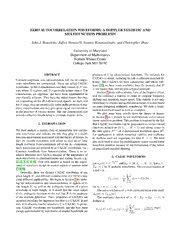
DTIC ADA476425: Zero Autocorrelation Waveforms: A Doppler Statistic and Multifunction Problems
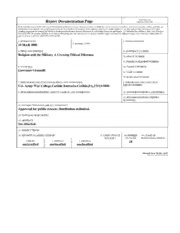
DTIC ADA448671: Religion and the Military: A Growing Ethical Dilemma
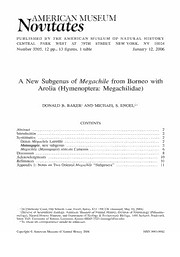
A new subgenus of Megachile from Borneo with arolia (Hymenoptera, Megachilidae)

Acta Histriae 25_2017_2

Corporate Governance: Recent Developments and New Trends

IS 12893: Pyrometric Reference Cones for laboratory use

Formwork

Code Red Fallujah: A Doctor's Memoir at War

Attitudes, Personality and Behavior (2nd Edition)
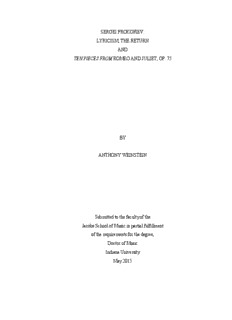
BY ANTHONY WEINSTEIN

Greek Government Gazette: Part 2, 2006 no. 518

Marxism and Totality
